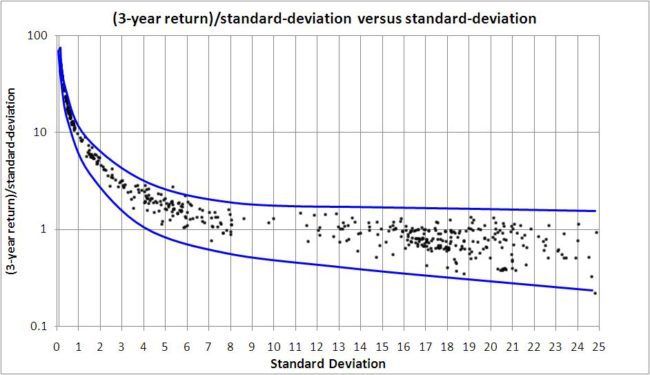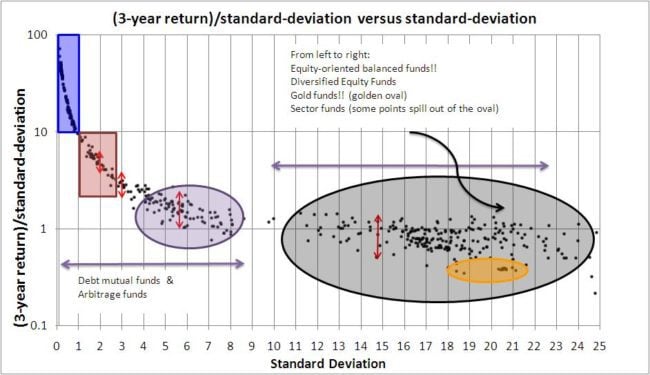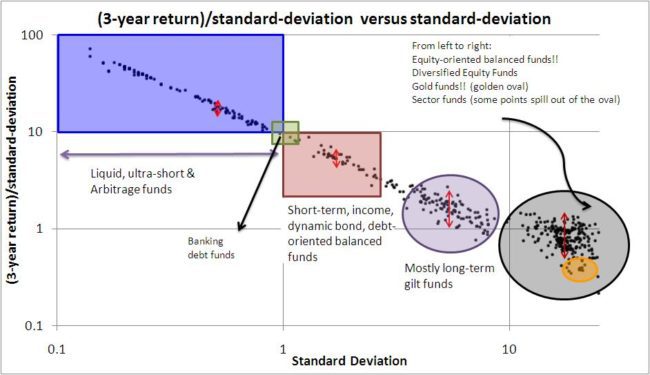Last Updated on September 4, 2018 at 10:19 am
‘Look before you leap’ is simple commonsense that escapes us Homo sapiens in most of our day-to-day activities. From eating, driving, breeding(!), spending, investing ….
When it comes to investing, the following pattern appears to be way too common for comfort:
A young earner realises the need to saving tax. A couple of months before March, a pension plan or child-education is purchased hurriedly to ‘save tax’.
Soon word reaches them that the ‘investment’ would yield no more than 5-6% and that they should shift to a term plan + mutual funds.
Join 32,000+ readers and get free money management solutions delivered to your inbox! Subscribe to get posts via email! (Link takes you to our email sign-up form)
🔥Want to create a complete financial plan? Learn goal-based investing? Exclusive access to our DIY tools? Increase your income with your skills? Enjoy massive discounts on our robo-advisory tool & courses! 🔥
Hurriedly investments in mutual funds are made. No effort is made to understand the risk(s) involved and choose suitable categories.
All that seems to matter are returns, especially the lack thereof!
Well, let not go down that depressing road.
Instead, let us ask,
what is the first ‘thing’ a mutual fund investor should understand before investing?
Let us make it even stronger.
What is the ‘one thing’ that everyone associated with mutual funds – investors, distributors, planners – must understand?
I have said it before and shall say it again:
The Standard Deviation – the key to successful mutual fund investing.
Saying that standard deviation is ‘too complicated for me to understand’ is like wanting to play the piano without touching the keys!
There is no choice about it. Either make the effort to understand it or pay someone who does!
How difficult is it anyway?
If someone says. ‘you can expect 10% return from fund A’, they are not guaranteeing a 10% return!
They are simply saying the average expected return is 10%. The actual return can be higher or lower than 10%.
The standard deviation is simply a measure how much the actual return will vary from the average return.
Higher the standard deviation, higher the variation and greater the uncertainly in actual return.
Now how difficult is that to understand?
For the purposes of this post, this definition will do.
If you want a slightly deeper understanding, try, Understanding the Nature of Stock Market Returns.
I have already written about the importance of standard deviation and how one can use it to select mutual fund categories suitable for your financial goals.
In this post, I will complement the above information with a standard deviation ‘map’.
Observing this map will provide deeper insights to the kind of returns that one can expect from each fund category.
One can use the standard deviation listed by Value Research Online (VRO), Morning Star online or by the Mutual Fund Risk and Return analyser, place it in this map to
- understand the extent of variation in return and
- determine the extent of ‘safety’ associated with the fund for short-term goals.
Standard Deviation Map In order to create this map, I listed all open-ended mutual funds listed in Value Research Online, excluding direct plans (regular plans should do for this), unrated mutual funds (too new) and plans closed for sales.
A total of 522 mutual funds.
The ‘returns’ and ‘risk-stats’ pages were downloaded as Excel sheets (VRO provides a link ).
The lists were merged and arranged in terms of increasing standard deviation. All fund categories (equity, debt, gold) were in the same list.
The 3-year return was taken and divided by the standard deviation. Let us call this, 3-Y-ret/stdev
The 3-year return is a reasonable period which is representative of the kind fluctuations one can expect in the funds NAV.
More importantly, VRO does not specify the duration associated with the standard deviation clearly. Its ranking system uses different durations for different fund categories. This is far from desirable but seems to work okay.
It is for this reason I prefer MorningStar. They clearly mention the duration and offer 5,10 and 15 year data, which is very useful. However, unlike VRO. they do not list the standard deviation for all the funds.
The 3-Y-ret/stdev was then plotted against the standard deviation to create the map.
 Notice that as the standard deviation increases, the scatter in the points increases as is evident by the increasing separation between the two blue lines.
Notice that as the standard deviation increases, the scatter in the points increases as is evident by the increasing separation between the two blue lines.
That is for a given standard deviation, multiple values of 3-Y-ret/stdev are possible. Higher the standard deviation, more the number of such values.
This implies that the spread in possible returns increases with standard deviation.
Before we move further notice that above a standard deviation of 4, 3-Y-ret/stdev are spread about a value of ‘1’.
That is for standard deviation >= 4, the returns are spread about a value equal to the standard deviation (3-Y-ret/stdev ~1).
So any fund having standard deviation of 4 or more can be called a ‘risky’ fund because,
- if R is the average return, and X the standard deviation, the return can ‘typically’ vary from R-X to R+X.
- if R/X is close to 1, then R-X can be negative!
- So the chance of losing money is high for short durations, since there would be no time to recoup losses.
- So is the chance of not getting a return close to ‘expectations’
All the funds with a standard deviation above 4 should only be used for long-term goals (durations much greater than 3 years!), because longer you stay invested in such funds, smaller will the standard deviation be.
The y-axis of the plot is in logarithmic scale. This is possible because, thanks to the bull run, there are no negative 3-Y-ret/stdev values!
Now we will further annotate this graph.
- Before we proceed, a bank fixed deposit or a recurring deposit has a standard deviation of ‘zero’. That is the expected return will always be equal to the calculated return.
- So for such instruments, 3-Y-ret/stdev = infinity (you are dividing by a zero).
- So if 3-Y-ret/stdev is considered a safety scale for short-term goals (about 3Y or less), FDs and RDs are infinitely safe!
- First, observe the red vertical arrows. They represent the spread in returns for a given standard deviation. Notice how they increase in length with increase in standard deviation
- Now look at the two long horizontal arrows. Standard deviations from 0-9 primarily consists of debt mutual funds and arbitrage funds (read more about arbitrage funds here)
- Standard deviation above 9 consists of balanced funds (they are risky!), equity funds and gold funds!! There is no better way to show that gold is at least as risky as stocks – in fact it is riskier!
- Now look at the blue rectangle at the top left of the graph. The standard deviation is less than 1 for these funds.
- Which is why, 3-Y-ret/stdev (safety!) is so high. Such funds ideal for short-term goals. The actual return will not (typically!) vary much from the average return.
- Now look at the pale burgundy colored rectangle. Here the returns can vary by a small but noticeable amount. So they could be used for durations greater than 3 years or as part of a well diversified portfolio for long-term goals.
- The small violet oval next to the rectangles represents risky debt funds like long-term gilt funds. These are strictly for long-term goals.
If we plot the x-axis also in logarithmic scale, features corresponding to 0.1-1 standard deviation become clear.
- The different debt fund categories are mentioned here.
- Notice the small green rectangle. They represent mutual funds that invest only in safe banking and psu bonds. They are idea for goals more than 2 years away and can even be used for long-term goals.
You can use this ‘map’ to locate the position of your current mutual funds. Hopefully, it will also help you choose funds better.
Here are guides to choosing equity mutual funds and debt mutual funds.
I hope you agree with that understanding standard deviation is key to successful mutual fund investing.
Not only will it help us choose funds better, but also, understand volatility better.
🔥Enjoy massive discounts on our courses, robo-advisory tool and exclusive investor circle! 🔥& join our community of 7000+ users!
Use our Robo-advisory Tool for a start-to-finish financial plan! ⇐ More than 2,500 investors and advisors use this!
Track your mutual funds and stock investments with this Google Sheet!
We also publish monthly equity mutual funds, debt and hybrid mutual funds, index funds and ETF screeners and momentum, low-volatility stock screeners.





- Do you have a comment about the above article? Reach out to us on Twitter: @freefincal or @pattufreefincal
- Have a question? Subscribe to our newsletter using the form below.
- Hit 'reply' to any email from us! We do not offer personalized investment advice. We can write a detailed article without mentioning your name if you have a generic question.
Join 32,000+ readers and get free money management solutions delivered to your inbox! Subscribe to get posts via email! (Link takes you to our email sign-up form)
About The Author
 Dr M. Pattabiraman(PhD) is the founder, managing editor and primary author of freefincal. He is an associate professor at the Indian Institute of Technology, Madras. He has over ten years of experience publishing news analysis, research and financial product development. Connect with him via Twitter(X), Linkedin, or YouTube. Pattabiraman has co-authored three print books: (1) You can be rich too with goal-based investing (CNBC TV18) for DIY investors. (2) Gamechanger for young earners. (3) Chinchu Gets a Superpower! for kids. He has also written seven other free e-books on various money management topics. He is a patron and co-founder of “Fee-only India,” an organisation promoting unbiased, commission-free investment advice.
Dr M. Pattabiraman(PhD) is the founder, managing editor and primary author of freefincal. He is an associate professor at the Indian Institute of Technology, Madras. He has over ten years of experience publishing news analysis, research and financial product development. Connect with him via Twitter(X), Linkedin, or YouTube. Pattabiraman has co-authored three print books: (1) You can be rich too with goal-based investing (CNBC TV18) for DIY investors. (2) Gamechanger for young earners. (3) Chinchu Gets a Superpower! for kids. He has also written seven other free e-books on various money management topics. He is a patron and co-founder of “Fee-only India,” an organisation promoting unbiased, commission-free investment advice.Our flagship course! Learn to manage your portfolio like a pro to achieve your goals regardless of market conditions! ⇐ More than 3,000 investors and advisors are part of our exclusive community! Get clarity on how to plan for your goals and achieve the necessary corpus no matter the market condition is!! Watch the first lecture for free! One-time payment! No recurring fees! Life-long access to videos! Reduce fear, uncertainty and doubt while investing! Learn how to plan for your goals before and after retirement with confidence.
Our new course! Increase your income by getting people to pay for your skills! ⇐ More than 700 salaried employees, entrepreneurs and financial advisors are part of our exclusive community! Learn how to get people to pay for your skills! Whether you are a professional or small business owner who wants more clients via online visibility or a salaried person wanting a side income or passive income, we will show you how to achieve this by showcasing your skills and building a community that trusts and pays you! (watch 1st lecture for free). One-time payment! No recurring fees! Life-long access to videos!
Our new book for kids: “Chinchu Gets a Superpower!” is now available!


Must-read book even for adults! This is something that every parent should teach their kids right from their young age. The importance of money management and decision making based on their wants and needs. Very nicely written in simple terms. - Arun.Buy the book: Chinchu gets a superpower for your child!
How to profit from content writing: Our new ebook is for those interested in getting side income via content writing. It is available at a 50% discount for Rs. 500 only!
Do you want to check if the market is overvalued or undervalued? Use our market valuation tool (it will work with any index!), or get the Tactical Buy/Sell timing tool!
We publish monthly mutual fund screeners and momentum, low-volatility stock screeners.
About freefincal & its content policy. Freefincal is a News Media Organization dedicated to providing original analysis, reports, reviews and insights on mutual funds, stocks, investing, retirement and personal finance developments. We do so without conflict of interest and bias. Follow us on Google News. Freefincal serves more than three million readers a year (5 million page views) with articles based only on factual information and detailed analysis by its authors. All statements made will be verified with credible and knowledgeable sources before publication. Freefincal does not publish paid articles, promotions, PR, satire or opinions without data. All opinions will be inferences backed by verifiable, reproducible evidence/data. Contact information: To get in touch, use this contact form. (Sponsored posts or paid collaborations will not be entertained.)
Connect with us on social media
- Twitter @freefincal
- Subscribe to our YouTube Videos
- Posts feed via Feedburner.
Our publications
You Can Be Rich Too with Goal-Based Investing
 Published by CNBC TV18, this book is meant to help you ask the right questions and seek the correct answers, and since it comes with nine online calculators, you can also create custom solutions for your lifestyle! Get it now.
Published by CNBC TV18, this book is meant to help you ask the right questions and seek the correct answers, and since it comes with nine online calculators, you can also create custom solutions for your lifestyle! Get it now.Gamechanger: Forget Startups, Join Corporate & Still Live the Rich Life You Want
 This book is meant for young earners to get their basics right from day one! It will also help you travel to exotic places at a low cost! Get it or gift it to a young earner.
This book is meant for young earners to get their basics right from day one! It will also help you travel to exotic places at a low cost! Get it or gift it to a young earner.Your Ultimate Guide to Travel
 This is an in-depth dive into vacation planning, finding cheap flights, budget accommodation, what to do when travelling, and how travelling slowly is better financially and psychologically, with links to the web pages and hand-holding at every step. Get the pdf for Rs 300 (instant download)
This is an in-depth dive into vacation planning, finding cheap flights, budget accommodation, what to do when travelling, and how travelling slowly is better financially and psychologically, with links to the web pages and hand-holding at every step. Get the pdf for Rs 300 (instant download)
